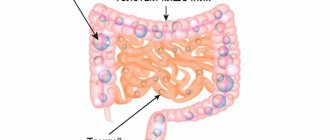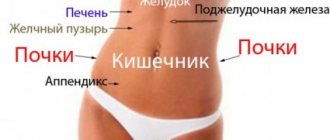Causes of the problem
Nausea and vomiting without fever occurs for various reasons. These include food poisoning, the state of stress in which the patient is, and digestive problems such as diseases of the gastrointestinal tract, dysbiosis and intestinal flu.
Can cause vomiting without fever, hangover, migraine, motion sickness. Sometimes the cause can be determined independently, but if it is not obvious (as, for example, in case of poisoning or hangover), it is better to consult a specialist.
Food poisoning is accompanied not only by vomiting, but also by diarrhea and fever. However, minor intoxication can cause only one serious symptom in the form of a reflex eruption of stomach contents. Although sometimes the state of poisoning of the body is also accompanied by convulsions, decreased blood pressure, and even loss of consciousness.
Poisoning is caused by ingestion of some inedible or toxic substances and ordinary food products that somehow contain toxic bacteria. Symptoms of poisoning also occur after taking certain medications. The main thing is to identify the cause in time and drink more fluids.
Constant stressful situations in your personal life or during work can lead to the appearance of symptoms similar to signs of poisoning - vomiting and nausea without a change in temperature. This occurs due to the fact that the body activates protective reactions to stress. Sometimes the symptoms are accompanied by severe headaches.
Symptoms often appear in a person shortly before some important event. In most cases, nausea goes away within a few hours or a couple of days. If improvement does not occur on the third day, you should contact a neurologist. Of course, for this you need to be sure of the cause of the problem - in other situations with similar symptoms, specialist help is required much earlier.
One of the most common diseases that causes vomiting without fever is intestinal flu. You can get it from another infected person - through contaminated food, unwashed hands and household items. Epidemic periods of intestinal flu usually occur in the autumn-winter period.
Additional symptoms of the disease include diarrhea, the frequency of which can reach up to 10 or more times a day. In this case, the stool becomes liquid, has an unpleasant odor and may acquire a greenish tint. Diarrhea causes the body to lose large amounts of fluid, which leads to dehydration. The patient's condition may return to normal after a few days, but final recovery, even after starting treatment, occurs only within a month.
Vomiting and nausea without fever can also be caused by diseases of the gastrointestinal tract:
- gastritis, additional symptoms of which include general weakness of the body, heartburn and pain in the peritoneum;
- pancreatitis, which can also be recognized by symptoms such as girdle pain extending beyond the left shoulder blade or sternum;
- gastroduodenitis, which usually occurs in an adult either without an increase in temperature or with a slight change in temperature (up to 37–37 degrees), and is accompanied by heartburn, loss of appetite and a feeling of heaviness in the stomach.
Sometimes enterocolitis can develop against the background of other gastrointestinal diseases. Additional symptoms include general weakness and the appearance of mucous or blood in the stool. Treatment for most of these diseases is prescribed after examination by a gastroenterologist, or less often by a surgeon.
In fact, dysbiosis is not a disease - rather, it is a condition of the body. Its causes are usually:
- long-term use of antibiotics;
- improper diet;
- prolonged (mainly due to lack of normal treatment) stomach upset.
Sometimes the state of dysbacteriosis is accompanied by diarrhea; the patient may complain of discomfort in the epigastric region (approximately in the upper part of the stomach) and increased gas formation. If the problem is caused by taking antibiotic drugs, chills may be added to the symptoms.
A hangover also causes vomiting without a change in temperature. Its appearance is the result of the following factors:
- poisoning of the body with alcohol products
- dehydration caused by frequent urination due to alcohol abuse;
- metabolic disorders in the body, which fights poisoning and consumes vitamins, macro- and microelements.
A hangover occurs in the morning and its symptoms disappear by the afternoon. If symptoms continue, you can try to eliminate the problem using folk remedies or by consulting a doctor.
Nausea and vomiting without fever can be caused by the following reasons:
- falls and blows;
- motion sickness when traveling by transport (car, bus, boat);
- migraine;
- meningitis;
- anorexia or bulimia.
In some cases, nausea occurs after taking anti-tuberculosis and hormonal medications. Similar symptoms are observed in workers of industrial enterprises whose bodies are exposed to heavy metals contained in the air. The cause of nausea and vomiting in women is toxicosis during pregnancy.
Stomach hurts, temperature 37, nauseated, headache
The symptoms of the onset of many different diseases are similar: a person has a headache and a temperature of 37, there may be malaise, weakness, dizziness or other manifestations that signal that something is wrong in the body.
It is important to pay attention to these symptoms in time, determine their cause and begin appropriate treatment. After all, any therapy started at an early stage is much more effective than treating advanced forms of the disease, when the disease has already “played out”.
This is especially true for viral infections, the fight against which should begin in the first days, or better yet, hours from the moment of detection.
Features of treatment
To eliminate vomiting without fever and the reasons that caused these symptoms, treatment with medications is used, first of all. Folk remedies have an additional positive effect on the patient’s body, the use of which should be discussed with a doctor. Will speed up recovery and adherence to a proper diet.
Medicines to eliminate symptoms are prescribed by a doctor only on the basis of a diagnosis made based on the results of a CT or MRI of the brain, ECG, blood and urine tests, ultrasound of the kidneys and gastrointestinal tract. If vomiting occurs due to severe intoxication of the body, the following is most often prescribed:
Traditional medicine offers to get rid of vomiting using the following recipes:
- Yarrow decoction - 1 tbsp. l. medicinal herbs are poured with heated water, brought to a boil over the fire and infused for at least 30 minutes. The product is taken in 2 tbsp. l. every half hour. As your health improves, the frequency of use is reduced to 3 times a day.
- Infusion of lemon balm leaves. You can prepare it from 1 tbsp. l. dried raw materials and a glass of boiling water. Infuse the product for at least half an hour, take 2-3 tbsp. l. in 3 hours.
- Ginger water - 1 tsp. grated ginger, pour a glass of boiling water and leave for 10 minutes. To improve the taste, add honey or lemon juice. Take the drug when nausea occurs, 2 tsp.
Treatment with folk remedies is recommended only as additional therapy. You should not expect that with their help you can completely get rid of the problem without consulting a doctor. However, with the help of such relatively easy-to-prepare infusions and decoctions, the patient’s condition can be significantly improved.
Food poisoning or medication overdose
These 2 problems also occur in our lives and they have exactly the same symptoms as pain in the head and stomach. Food poisoning is a fairly common problem.
We are what we eat. Not many people can boast that they eat only healthy foods. Constant saving leads to the fact that a person buys cheap and not always high-quality products.
The causative agent of the infection is Salmonella and its waste products. They get inside with food.
Most often found in meat and fish products, milk, semi-finished products, canned food, sauce, mayonnaise, and cheese.
This is not the entire list of possible products. To protect yourself at least a little, you need to:
- Buy fresh product with a valid expiration date.
- Store food correctly. The temperature and location are observed.
- Careful about cooking. With high and prolonged heat treatment, bacteria and viruses are destroyed.
Main signs of poisoning:
- The person may shiver and have a fever.
- I have a stomachache.
- Muscle weakness and general malaise.
- Mild headache.
- The main pain syndrome is localized precisely in the gastrointestinal tract. In this case, convulsions and seizures are possible.
- Blurred vision.
- Nausea.
- Vomit.
- Diarrhea.
Food poisoning puts the body under a lot of stress and dehydration. For a long time, the patient is prescribed to drink plenty of fluids.
In case of drug overdose or food poisoning, consultation and intervention of specialists is required. This is a very serious situation that can play a cruel joke on a person, even to the point of death.
While there is no qualified physician nearby, the person or loved ones provide first aid to themselves. First of all, wash.
A person can cause himself to vomit. It is enough to press with your fingers or a spoon on the root of the tongue.
It is recommended to drink plenty of water before inducing vomiting. You can also dilute a weak solution of manganese.
In case of poisoning, be sure to use sorbents: activated carbon or Polysorb. The dosage is determined at the rate of: 1 tablet per 10 kg of live weight.
Throughout the entire time, the victim needs as much fluid as possible: water, tea, solution of hydrovit and rehydron. Unlike liquids, food is kept to a minimum.
A strict diet is required. As a last resort, you can drink strong tea with regular bread crumbs without additives.
Toxic infection
Food poisoning is not always accompanied by salmonellosis. The causes of intoxication of the body can be bacterial toxins: staphylococcus, clostridia.
Staphylococcal infection has the following symptoms:
- Extremities get cold.
- My head is spinning.
- Severe stomach pain in the pit of the stomach.
- Be sick.
- Vomits.
- My vision becomes cloudy.
- Blood pressure drops.
Usually, with timely assistance to the body, poisoning goes away within a day. It is much more difficult with toxic infection caused by the bacterium Clostridia.
Signs:
- Severe abdominal pain localized in the navel.
- Loose and frequent stools.
- Rapid dehydration and, as a result, malaise, weakness and headache.
- Vomit.
- Darkness in the eyes.
- The temperature may rise.
With food poisoning caused by bacteria - botulism, muscles weaken, the stomach and head hurt, vomiting and diarrhea begin, and the temperature rises.
A distinctive feature of this poisoning is that the eyelids droop and food is difficult to swallow.
It is very important to seek help in a timely manner, since this is a serious disease that paralyzes the respiratory system and death can occur.
Nutrition and care features
In addition to treatment, the patient is prescribed a certain diet. The diet of a person with vomiting without fever may include the following foods:
- black tea with crackers;
- rice water (or porridge);
- light soups;
- zero-fat kefir;
- boiled meat.
Eating spicy, fried and spicy foods is not allowed. It is recommended to give up bad habits such as alcohol and smoking. The patient should not drink carbonated drinks. When drinking mineral water, you should definitely consult a doctor - each type is designed to improve the health status of a specific disease.
Prevention
You can prevent vomiting without fever by following these recommendations:
- observing personal hygiene, including mandatory hand washing before eating and after visiting public places;
- eating meat and fish dishes only after heat treatment;
- periodically undergoing medical examinations to detect gastrointestinal diseases and other health problems in the early stages.
In order to prevent symptoms from arising as a result of alcohol intoxication, you should be more careful about drinking alcohol. And to avoid such a state caused by stress, a calm attitude towards problems and, if possible, avoiding stressful situations and thoughts will help. Compliance with these rules will significantly reduce the risk of vomiting without fever and the discomfort associated with these symptoms.
The causes of vomiting without fever in an adult vary. Most often these include food poisoning and diseases of the digestive system, and in some cases alcohol. If such symptoms appear, the patient or those around him should call a doctor, and until doctors arrive, provide first aid.
Vomiting, fever, abdominal pain - in adults, these symptoms may indicate food or alcohol poisoning, exacerbation of cholecystitis or pancreatitis. In women, such symptoms often accompany menstruation, especially in the first days. In particularly sensitive individuals, abdominal pain and nausea appear in a stressful situation, for example, before an exam. In order to properly respond to the situation and know when to call an ambulance, you need to pay attention to how often the pain appears or when it first appears, the intensity and accompanying symptoms, as well as your own well-being.
Infectious diseases
Most often, pain in the abdominal cavity combined with fever occurs with infections of the digestive system. This is explained by the rapid proliferation of pathogenic microflora with the simultaneous release of toxins and decay products of their vital activity into the blood. Therefore, such pathologies affect the entire human body.
Abdominal pain, vomiting and temperature 38-39 are manifestations of almost all infectious diseases and poisonings. In this case, you should also not self-medicate.
This is how they most often manifest themselves:
- Salmonellosis;
- hepatitis;
- dysentery;
- food poisoning;
- infection with staphylococcus;
- rotavirus infection;
- botulism;
- cholera.
When they occur, most often the patient complains that he has pain in the lower abdomen and a temperature of 38-38.5. These infections are characterized by general intoxication of the body, severe diarrhea, and headache.
A person's stomach tightens so much that he is unable to bear it. After visiting the toilet, the pain goes away a little, but soon returns. The stool is usually loose, with mucus, pus, or even blood.
In this case, the patient requires urgent medical attention. Most often, he needs urgent hospitalization not only to preserve his health and life, but also to remain in quarantine. These diseases are often extremely contagious. Most often they affect people with reduced body defenses.
In this case, you also cannot wait for a possible improvement; you should urgently call an ambulance.
While waiting for her, it is necessary to remember what the person ate or drank the day before, whether he swam in questionable bodies of water or visited places that did not meet sanitary requirements. In such cases, it is necessary to take the patient’s stool for analysis, including culture to determine sensitivity to antibiotics.
It is after this that the most effective drugs can be prescribed. A person should remain in the hospital until the research results show the complete absence of any colonies of pathogenic microorganisms in order to exclude cases of possible carriage.
Causes of abdominal pain and vomiting in adults
Food poisoning is the most common cause of stomach pain. Usually food is retained in the upper gastrointestinal tract and does not pass further. When the stomach is cleansed by vomiting, relief comes. When pathogenic microorganisms, such as salmonella, are ingested, a person’s well-being quickly deteriorates - diarrhea and severe vomiting can develop within 6 hours. Consciousness is dulled due to exposure to toxic poisons secreted by the bacillus. The temperature can reach 40 degrees with salmonellosis. There are various forms of this disease, of which the most dangerous is septic, in which symptoms of sepsis develop after a short period of time. In this case, there is a chance to save the person by urgently transporting him to a medical facility for gastric lavage, antibacterial therapy and detoxification.
Low-quality products can cause temporary distress in the form of flatulence, bloating and vomiting, after which the person’s condition gradually stabilizes and becomes easier.
Women at the beginning of pregnancy, when she may not be aware of her new condition, often have symptoms of poisoning - dizziness, nausea or vomiting, as well as nagging abdominal pain. This is how the body reacts to fertilization. All systems and organs begin to work in a new way. If there are reasons to think about pregnancy, it is better to check with a test strip before contacting doctors.
Hepatitis is a more serious cause for concern. A sick person becomes a source of infection for everyone else. After hepatitis, you can experience discomfort when eating food, drinking alcohol, and suffer from reduced immunity for the rest of your life. Many people developed cirrhosis of the liver after hepatitis B or C, so during treatment and the recovery period it is necessary to follow a diet, water regimen and not overload yourself physically.
Viruses enter the body and a hidden incubation period begins, during which there are no symptoms. The first of them appear after 2 - 3 weeks. These include abdominal pain and vomiting, as well as dark urine. The person must be quarantined in an infectious diseases department to prevent other family members from getting sick.
The ulcer can manifest itself regularly or periodically - in the autumn-spring periods. The disease is characterized by various types of pain - aching, sharp or stabbing. The latter are a sign of perforation of the ulcer and the presence of internal bleeding. It is difficult to get out of this condition on your own; you need the help of a surgeon.
The condition is rare, but does occur. The cause may be products - vegetables, fruits, fish caught in water bodies contaminated with dangerous runoff. Nausea and vomiting, as well as kidney failure, abdominal pain, and tremors of the limbs are the main symptoms of poisoning. Symptoms are often observed in people who, due to their occupation, come into contact with hazardous substances.
The presence of parasites in the intestines is also accompanied by pain and vomiting, the cause of which is intoxication with poisons. A ball of roundworms can cause intestinal obstruction, so if there is constant vomiting that does not bring relief, the person must be taken to the hospital, where he will undergo surgery to restore intestinal patency.
Worms cause a decrease in immunity, so when infected, a person often suffers from colds and viral diseases.
Appendicitis
Inflammation of the appendix (an appendage of the cecum) in the bulk of all diagnosed cases involves surgical treatment - the inflamed appendage of the intestine is excised. Symptoms of appendicitis include: pain in the lower abdomen on the right side, diarrhea (sometimes constipation), increased body temperature (indicators depend on the current stage of appendicitis).
Nausea and vomiting occur, as well as pain in the area of projection of the inflamed appendix. In acute complicated appendicitis, the patient experiences a sharp increase in pathological symptoms and a deterioration in general condition. If the pain does not stop for more than 6 hours, then the patient needs hospitalization.
The pain in this pathology is described as bursting, pulling, initially spreading to the entire abdomen and gradually shifting to the lower right quadrant. It becomes constant and intensifies when a person lies on his left side.
In rare cases, the area of pain associated with appendicitis is completely atypical: the person has a tightening/pain in the lower back. This is due to the anatomically atypical location of the appendix - it is directed posteriorly, towards the kidneys and spine, and not towards the anterior abdominal wall.
Warning signs
Acute pancreatitis and cholecystitis, appendicitis, strangulated umbilical hernia, adhesions causing intestinal obstruction are dangerous conditions that require emergency care. Vomiting and sharp abdominal pain occur with ectopic pregnancy, which is dangerous due to internal bleeding and death of the patient.
Abdominal pain does not stop after vomiting - this means there is an inflammatory disease of the gastrointestinal tract. In people who suffer from a chronic form of pancreatitis or cholecystitis, periodic exacerbations are possible if the doctor’s recommendations are not followed. Symptoms characteristic of this condition:
- increased body temperature;
- lack of appetite;
- vomit;
- flatulence, diarrhea or constipation;
- sharp girdle pain.
A mild attack can be controlled by fasting for 2–3 days, as well as by taking antibiotics and anti-inflammatory drugs. In a severe situation, with obstruction of the ducts and necrotic processes in the internal organs, surgery is necessary.
Sharp pain in the right lower abdomen, nausea or vomiting are a sign of inflammation of appendicitis. In this situation, there is only one way out - surgery to remove the appendix. If surgical intervention is not performed in time, a rupture may occur and pus will enter the peritoneum, peritonitis and blood poisoning will begin, after which it will be difficult to save the person.
A strangulated umbilical hernia and adhesions in the abdominal cavity cause intestinal obstruction. In this case, uncontrollable vomiting begins, first with gastric and then intestinal contents, defecation stops, cold sweat is released, and symptoms of intoxication are present.
Both conditions are life-threatening. The person must be operated on urgently so that intestinal necrosis does not begin and its contents do not enter the peritoneum. If you miss the moment of pain, it subsequently subsides, and the patient begins to have peritonitis.
How to distinguish appendicitis from other diseases
Nausea, dizziness, weakness and abdominal pain also occur due to inflammation of appendicitis, and in order not to go down the wrong path, you should know the differences between this disease and others.
Quite a huge number of acute and chronic diseases with pain in the abdominal area are known. But appendicitis differs from other diseases in the localization of pain.
It should be noted that at first it is difficult for the patient to indicate the place emitting pain; it spreads throughout the entire abdominal cavity, predominant in the upper abdomen, often concentrating in the navel area.
Only after approximately seven hours does the pain become concentrated in one specific place and, in most cases, this is the right iliac region, that is, just below the waistband of wearing trousers, on the right.
Of course, you should not rely entirely on the localization of pain. In some cases, depending on the anatomical structure, the appendix may be located higher, then the pain will be transferred to the ribs, or it may be bent back, and the pain will be localized in the lower back.
Note! Vomiting, such a common symptom of a huge number of diseases and disorders of the body, during appendicitis contains bile.
Diagnostic methods
To determine the cause of abdominal pain and vomiting, blood, urine and feces are examined in the laboratory. If the infectious nature of the disease is confirmed, the patient is quarantined.
Ultrasound is the most popular method for examining the abdominal organs. With its help, you can determine the fact of tissue damage, organ enlargement or bleeding, after which the doctor can make an accurate diagnosis and begin treatment.
If there is no time for diagnosis, and the patient is in extremely serious condition, the operation is performed immediately and the cause is found out in the process.
Pathology of other organs and systems
Non-infectious pathologies accompanied by the development of abdominal pain and hyperthermia are the following diseases:
- acute appendicitis;
- acute cholecystitis or chronic in the acute stage;
- acute pancreatitis;
- intestinal obstruction;
- hernia.
In addition, this group includes peritonitis, which is usually not a primary disease, but is a complication of gastrointestinal pathology, such as:
- gastric and duodenal ulcers complicated by perforation;
- gallbladder perforation;
- injuries accompanied by rupture of the liver, spleen;
- tumors;
- intestinal bleeding.
The most common non-infectious cause when a patient has abdominal pain and fever is acute appendicitis.
In a typical case, the disease is characterized by the development of pain in the epigastric region with its further displacement to the right iliac region. Temperature indicators are noted at the level of subfebrile numbers.
In children, the disease may develop atypically, making diagnosis difficult. Since fever and abdominal pain in a child are symptoms of some infectious diseases, this must be taken into account for differential diagnosis. Monitoring the dynamics of blood leukocytes can help (acute appendicitis is characterized by a tendency for leukocytosis to increase over several hours).
Acute cholecystitis (or chronic in the acute stage) is also accompanied by intense abdominal pain and a temperature of 38 degrees. The pain is localized in the right hypochondrium or at the point of projection of the gallbladder. It intensifies after eating fatty or fried foods. In addition to abdominal pain, a temperature of 37-38 degrees, the presence of dyspeptic disorders is characteristic, such as nausea, bitterness in the mouth, and sometimes vomiting. An asthenovegetative syndrome may occur, characterized by weakness, irritability, and insomnia.
When stones form in the gall bladder, jaundice may develop. To clarify the question of the need for surgical intervention, an important diagnostic method is ultrasound of the liver and gallbladder, which makes it possible to identify stones, their size, and location. It is this valuable information that helps determine treatment tactics.
A condition where the stomach hurts and has a high temperature is also characteristic of acute pancreatitis. The pain is intense, girdling, or localized in the left hypochondrium and radiates to the back. Temperatures can reach 39 degrees. Nausea, vomiting, and “pancreatic” stool in the form of liquid, foamy feces, consisting of undigested fat residues, are also characteristic.
An adult may have a stomach ache and a temperature of 37 when a hernia is strangulated. The most common, accompanied by pain in the abdominal area, are inguinal, femoral, and umbilical hernias. The pain is localized at the site of the hernia projection or covers the entire abdomen. Since it is preferable to carry out any surgical intervention as planned, patients with such pathology should promptly seek advice from surgeons, without waiting for complications to develop.
The disease is characterized by abdominal pain and vomiting without fever. The nature of the pain is bursting, cramping. Nausea and vomiting of stagnant contents occur. Objectively: the abdomen is distended, there is asymmetry, retention of stool and gases. X-ray examination determines the presence of pneumatosis.
The main symptom of peritonitis, inflammation of the peritoneum, is increasing abdominal pain, vomiting, fever, and rapid deterioration in general condition. Objectively, abdominal bloating, severe pain in all parts, unstable blood pressure, and tachycardia are noted. The condition requires immediate surgical intervention. Otherwise, it can lead to shock and death.
As for infectious diseases accompanied by abdominal pain and fever in adults and children, these include
- dysentery;
- salmonellosis;
- food poisoning;
- viral hepatitis;
- helminthic infestations.
The most typical disease is dysentery, accompanied by symptoms of general intoxication, such as weakness, malaise, loss of appetite, fever, and headache. Abdominal pain is initially diffuse, then becomes cramping, intensifying before defecation. Characteristic is the presence of tenesmus, nagging pain in the rectum, radiating to the sacrum. There may be stools more than 10-15 times a day. In severe cases - up to 50. In this case, feces are replaced by mucus and blood.
In atypical forms, the presence of blood and mucus in the stool may not be noted, which complicates diagnosis. Differential diagnosis in this case must be carried out with other intestinal infections, such as stomach pain, diarrhea and fever. In addition to clinical data, confirmation of the diagnosis can be based on the isolation of the pathogen from feces and bacteriological examination.
Since the causative agent of the disease is a bacterium of the genus Shigella, a course of antibiotic therapy will prevent the disease from becoming chronic and will promote recovery.
Salmonellosis is an acute infectious disease characterized by various forms from asymptomatic to the development of infectious-toxic shock. The most typical is the gastrointestinal form, characterized by an acute onset, the presence of intoxication, an increase in body temperature to high levels, stomach pain, nausea, and vomiting.
It is characterized by thirst, dry, wrinkled skin, lack of urine, and decreased blood pressure. Seizures may develop. In addition to gastric lavage, therapeutic measures necessarily include replenishing fluid lost by the body. For diagnosis, an important role is played by identifying the pathogen in food debris, feces, vomit, as well as the spread of the disease in a group of people who consumed a certain contaminated product.
Foodborne illness is another very common disease characterized by symptoms such as abdominal pain, vomiting, and fever. Diarrhea develops in half of sick patients. The most common pathogen in this case is staphylococcus or its metabolic products, enterotoxins.
Patients complain of stomach pain, nausea, temperature 37, severe weakness. The pain is sharp and cramping in nature. Weakness and malaise are very pronounced. There is a decrease in the temperature of the extremities, pallor of the skin, and a decrease in blood pressure. Despite such pronounced symptoms, by the end of the day there is usually an improvement in the condition and recovery.
The initial period of botulism is also accompanied by nausea, vomiting, diarrhea, and abdominal pain at normal temperatures. The neurological symptoms that characterize this disease can appear only after a day. Given the serious prognosis of the disease, urgent medical attention is necessary.
The presence of abdominal pain, temperature of 37-38 degrees, and dyspeptic disorders is also characteristic of viral hepatitis. Diagnosis can be difficult in the pre-icteric period. With the appearance of a pathognomonic symptom, differential diagnosis is carried out between hepatitis of other etiologies and diseases accompanied by the development of jaundice, which is very important for determining treatment tactics and carrying out measures in the outbreak.
In some cases, abdominal pain masks another pathology that is not associated with damage to the gastrointestinal tract:
- gynecological diseases (ovarian rupture, ectopic pregnancy, pelvic tumors);
- renal pathology (pyelonephritis, kidney stones, glomerulonephritis);
- myocardial infarction.
Osteochondrosis, accompanied by pinched nerves, can also cause pain in the abdominal area. There are frequent cases of erroneous hospitalization of such patients in surgical departments.
Diseases when a patient has a stomach ache and a temperature of 38 degrees is very often renal pathology. The pain is localized in the lumbar region or abdomen, which makes diagnosis difficult.
In this case, there may be complaints of pain when urinating, frequent urges, and urine in the form of meat slop. A general urine test, as well as an ultrasound examination of the kidneys, will help determine additional examinations and the choice of treatment tactics.
As for gynecological pathology, if it is not associated with ovarian rupture, the pain develops gradually and is constant, nagging in nature, localized in the suprapubic region or at the site of projection of the ovary. No additional dyspeptic complaints were noted. However, purulent or bloody vaginal discharge may occur, which is also a diagnostic sign. In this case, a consultation with a gynecologist will help determine the cause.
Abdominal pain is a symptom of many serious surgical diseases. Timely surgical treatment of such conditions is a very important prognostic sign. Consequently, in all cases where there is a danger of just such a pathology, it is necessary to seek help from specialists, especially if the pain syndrome is pronounced, there are additional symptoms in the form of hyperthermia, a sharp deterioration in the general condition, and dyspeptic disorders.
Causes of abdominal pain and vomiting
When people talk about abdominal pain, they usually mean the sensations coming from the internal organs located directly in the abdomen, and not the soreness of the skin or the underlying muscle layer. Vomiting, in most cases, signals the body’s desire to cleanse itself, to get rid of contents that irritate the walls of the stomach. The occurrence of antiperistaltic (reverse to the normal flow of food) movement begins when the intensity of irritation exceeds the permissible threshold.
Abdominal pain and vomiting can be caused by inflammatory processes of infectious and non-infectious origin, significant deformation (stretching) or ischemia of almost any organ of the abdominal region or retroperitoneal space.
Risk factors for the appearance of such symptoms are viral diseases, bacterial infections (food poisoning), allergic reactions, appendicitis, diverticulitis, hepatitis, pancreatitis, nephritis, acute gastritis, exacerbation of peptic ulcers, toxic effects of toxic substances, the presence of parasites and others.
Pain during stretching of the digestive organs, ischemic processes in their membrane appears under the influence of such factors as blockage or compression of the lumen by calculous formations, neoplasms, and volvulus. The closer to the stomach the obstruction develops, the stronger the urge to vomit and the more intense the vomiting.
Abdominal pain and vomiting can also appear with a mysterious disease - irritable bowel syndrome, when the patient has these symptoms, but there are no organic disorders.
Gynecological diseases in the acute stage can be accompanied not only by pain, but also by vomiting caused by pain.
Sometimes the appearance of such symptoms accompanies neuroses and other disorders of the nervous system, for example, an acute reaction to strong shocks, unpleasant stimuli, and stressful situations. First of all, nausea, vomiting and pain associated with retching are caused by vasovagal reactions, when the immediate cause is a temporary disruption of the blood supply to the brain caused by dysfunction of the heart muscle due to intense stimulation of the sensory fibers of the vagus nerve. Irritation of the phrenic nerve also stimulates the gag reflex.
Abdominal pain and vomiting can occur in diabetics due to impaired glucose metabolism or gastroparesis.
Pain radiating to the abdominal region in combination with vomiting is sometimes present in the clinical picture of myocardial infarction, pneumonia or bronchitis.
These symptoms are often observed during treatment with certain drugs (corticosteroids, cytostatics, non-steroidal anti-inflammatory drugs), undergoing a course of x-ray therapy, and septic conditions.
[8], [9], [10], [11], [12], [13]
Why do stomach pains occur?
First you need to establish that it is your stomach that hurts.
To do this, you need to lie on your back and, by palpation, knead the area around the navel, moving in a circle. If you are convinced that your stomach hurts, and this is accompanied by a high temperature, then you urgently need to understand the etymology of the disease. Diseases of this digestive organ are divided into main types - infectious and non-infectious. Infectious diseases can affect the entire digestive tract, causing pain, nausea, vomiting and other unpleasant symptoms. A high temperature, which can reach 37-38°C, signals inflammatory processes. The most common infectious diseases are as follows.
Food poisoning
It can occur due to consumption of spoiled foods, food that has not undergone proper heat treatment, poisoned or contaminated food.
Main symptoms:
- Sharp pain in the stomach area;
- Body temperature from 38°C and above;
- Nausea, vomiting;
- Diarrhea.
If the cause of poisoning is established, it is necessary to urgently seek specialized medical help. While waiting for the doctor, rinse the stomach with plenty of boiled warm water and take adsorbents.
Salmonellosis
The most common way of contracting this disease is eating raw eggs. The bacterium enters food from poorly processed eggshells. Main symptoms:
- Pain in the stomach area;
- Severe nausea, vomiting;
- Liquid heterogeneous stool of a greenish tint;
- Prolonged high temperature 38-39°C.
Gastroenteritis
An infectious disease that can be both viral and bacterial in nature. The most common cause of gastroenteritis is rotavirus or E. coli.
Symptoms:
- Severe abdominal pain, which in some cases is accompanied by headache;
- Vomiting and diarrhea;
- Temperature 37°C and above;
- Muscle weakness, fatigue;
- In some cases, blood may be found in the stool.
Non-infectious diseases can be represented by the following pathologies.
Stomach ulcer
Appears due to corrosion of the gastric mucosa by bile and hydrochloric acid. The disease is chronic, with periods of relief and seasonal exacerbations. Requires timely diagnosis and constant monitoring by a doctor, as it can provoke perforation of the stomach. Then, without urgent medical care, death is possible. Ulcer symptoms:
- Feeling of nausea after eating;
- During exacerbation, the temperature rises to 37°C and above;
- Heartburn or sour belching;
- Sudden weight loss;
- Pain in the upper abdominal segment.
Gastritis
This disease is an inflammation of the inner mucous membrane of the stomach. It is very common among students. The youth habit of “catching on the run” and a constant half-starvation state disrupt the normal functioning of the stomach.
There are several types of gastritis. Catarrhal gastritis appears after poisoning, as well as due to heavy drinking and overeating. Pain appears 6-8 hours after the irritant enters the stomach. If the factor provoking catarrhal gastritis is eliminated, the mucous membrane is soon restored.
Symptoms of catarrhal gastritis:
- Pain in the stomach area;
- Feeling of fullness in the stomach;
- Nausea with possible vomiting;
- Increase in normal temperature to 37-38°C;
- Weakness;
- Progressive diarrhea.
Corrosive or erosive gastritis appears due to exposure of the mucous membrane to acids or alkalis. Often develops into a peptic ulcer. Symptoms:
- Pain in the stomach on an empty stomach or an hour after eating;
- Heartburn;
- Symptoms characteristic of internal bleeding are vomiting blood, black tarry stools;
- Nausea and vomiting;
- Belching.
Acute gastritis is a disease that is provoked by sudden disturbances in the nutritional system. Often acute gastritis becomes chronic and is the cause of peptic ulcer. May cause stomach cancer.
Symptoms:
- Severe pain under the ribs;
- Heartburn;
- Bloating;
- Nausea.
Stomach spasms and short-term diarrhea can be triggered by nervous shock or physical overload. In some cases, this is how appendicitis manifests itself.
Sometimes pain in the stomach area indicates the development of a heart attack. This form of the disease is accompanied by vomiting and is very similar to poisoning.
Diarrhea can be cured and pain relieved with the help of medications and diet, which are recommended by the doctor after determining the cause of this condition, which is described in more detail in this article.
Therapy and prevention of the disorder
1. It is not recommended to treat prolonged diarrhea on your own, especially if a child has indigestion.
In case of severe abdominal pain, you should urgently call a doctor. Sometimes ignoring symptoms leads to disastrous consequences.
It is not advisable to take strong painkillers before the doctor arrives. They will blur the picture of the disease, which will complicate diagnosis.
To relieve pain, it is permissible to take a couple of No-shpa tablets. It relaxes smooth muscles and relieves spasms.
2. If the cause of indigestion is known, you can relieve pain with the following medications:
- In case of overeating, lack of enzymes, especially with low stomach acidity, the following will help: Festal, Mezim forte, Creon, Panzinorm, Plantex, Trienzyme.
- Stomach pain caused by gastritis or ulcers is relieved by coating medications. These include: Maalox, Almagel A, Gaviscon, Flacarbine.
- For increased acidity of gastric juice, Omez, Omeprazole, Gastal, Gastrofarm, Rutacid are prescribed.
- Spasms are relieved with No-shpa, Buscopan, Besalol.
3. Diarrhea is treated comprehensively. They use drugs that improve digestion and normalize microflora. To eliminate intestinal infections, targeted antibiotics are used. The body is rehydrated, replacing fluid and microelements lost during diarrhea.
Nausea after eating manifests itself as an extremely uncomfortable state, which is accompanied by rapid pulse, pallor, increased salivation, and weakness throughout the body.
Food poisoning
Sharp pain in the stomach area; Body temperature from 38°C and above; Nausea, vomiting; Diarrhea.
Salmonellosis
The most common way of contracting this disease is eating raw eggs. The bacterium enters food from poorly processed eggshells.
Pain in the stomach area; Severe nausea, vomiting; Liquid heterogeneous stool of a greenish tint; Prolonged high temperature 38-39°C.
Gastroenteritis
Severe abdominal pain, which in some cases is accompanied by headache; Vomiting and diarrhea; Temperature 37°C and above; Muscle weakness, fatigue; In some cases, blood may be found in the stool.
Stomach ulcer
Appears due to corrosion of the gastric mucosa by bile and hydrochloric acid. The disease is chronic, with periods of relief and seasonal exacerbations. Requires timely diagnosis and constant monitoring by a doctor, as it can provoke perforation of the stomach. Then, without urgent medical attention, death is possible.
Feeling of nausea after eating; During exacerbation, the temperature rises to 37°C and above; Heartburn or sour belching; Sudden weight loss; Pain in the upper abdominal segment.
Gastritis
Pain in the stomach area; Feeling of fullness in the stomach; Nausea with possible vomiting; Increase in normal temperature to 37-38°C; Weakness; Progressive diarrhea.
Corrosive or erosive gastritis appears due to exposure of the mucous membrane to acids or alkalis. Often develops into a peptic ulcer.
Pain in the stomach on an empty stomach or an hour after eating; Heartburn; Symptoms characteristic of internal bleeding are vomiting blood, black tarry stools; Nausea and vomiting; Belching.
Severe pain under the ribs; Heartburn; Bloating; Nausea.










